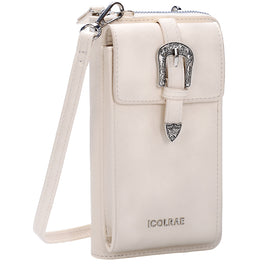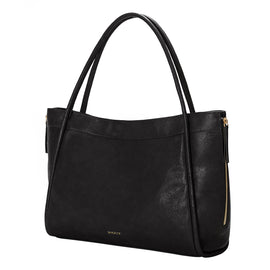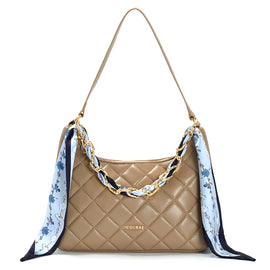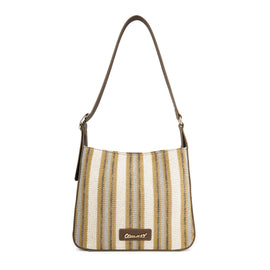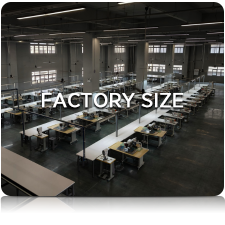Why are vegetable-tanned leather bags more eco-friendly?
Introduction
In today’s fashion industry, sustainability has become more than just a trend—it is a responsibility. One of the most eco-friendly materials widely recognized by leather goods manufacturers is vegetable-tanned leather. Unlike chemically treated leather, vegetable tanning uses natural tannins derived from plants, making it a safer, greener alternative. In this blog, we will explore what vegetable-tanned leather is, how it is made, what sets it apart from other tanning methods, its advantages, and why HerminFashion chooses it for custom bag manufacturing.
What is Vegetable-Tanned Leather?
Vegetable-tanned leather, often referred to as “veg-tan leather,” is produced through a traditional and natural tanning process that uses tannins extracted from plants. These tannins penetrate the hides slowly, enhancing the natural fibers of the leather and giving it a unique look and feel. Because no synthetic chemicals are used, vegetable-tanned leather is considered environmentally friendly, durable, and highly valued in the fashion industry.
Sources of Plant-Based Tannins
The tanning agents used in vegetable tanning are derived from various plants. The most common sources of tannins include:
-
Oak bark – Known for giving leather a warm, brownish hue and sturdy texture.
-
Chestnut wood – Provides excellent durability and a deep, rich color.
-
Quebracho wood – Often used to create reddish-brown tones.
-
Tara pods – Offers lighter shades and enhances softness.
-
Sumac leaves – Creates pale, greenish tones and a smooth finish.
Each tannin source influences the final leather’s color, texture, and feel, offering designers a wide range of creative and functional possibilities.
The Process of Vegetable Tanning
The vegetable tanning process is time-intensive, often taking several weeks. Below is a simplified overview of the steps:
-
Preparation of hides – Raw hides are cleaned, soaked, and de-haired.
-
Tannin immersion – The hides are placed in vats filled with water and plant tannins. Over time, the tannins slowly penetrate the fibers.
-
Layering and drying – The hides are layered and dried carefully to preserve their natural texture.
-
Conditioning and finishing – Oils and natural waxes are applied to enhance flexibility, durability, and shine.
This meticulous process ensures the leather retains its natural character while gaining strength and resilience.
How Does Vegetable Tanning Differ From Other Methods?
-
Chrome tanning – Uses chromium salts, which speed up the process to just a few days but can cause environmental pollution.
-
Synthetic tanning – Relies on artificial agents for cost efficiency but often compromises sustainability.
-
Vegetable tanning – Takes longer but is eco-friendly, biodegradable, and produces leather with rich natural aesthetics.
In short, vegetable tanning values sustainability and craftsmanship over speed.
Advantages of Vegetable-Tanned Leather Bags
-
Eco-friendliness – Produced without harmful chemicals, reducing environmental impact.
-
Durability – Vegetable-tanned leather ages gracefully, developing a beautiful patina over time.
-
Unique aesthetics – Each bag has natural variations in color and texture, making every piece unique.
-
Hypoallergenic properties – Safer for sensitive skin compared to chemically treated leather.
-
Long-term value – High resistance to wear makes it ideal for luxury and everyday bags.
Applications of Vegetable-Tanned Leather Bags
Vegetable-tanned leather is widely used in:
-
Luxury handbags that highlight craftsmanship and uniqueness.
-
Backpacks and satchels designed for durability and everyday use.
-
Wallets and belts where longevity and a rich patina are prized.
-
Eco-conscious collections by fashion brands seeking sustainable options.
HerminFashion’s Approach to Eco-Friendly Custom Bags
At HerminFashion, we understand the growing demand for sustainable fashion. As one of the leading custom handbag manufacturers in Guangzhou, we carefully source eco-friendly leather materials, including premium vegetable-tanned leather. By using advanced material testing and cost-optimization strategies, we help brands select the most suitable, high-quality, and affordable eco-leather for their collections.
From concept design to bulk production, our team ensures every custom bag reflects both environmental responsibility and refined craftsmanship. Choosing HerminFashion means choosing a partner who values sustainability without compromising on style.
Conclusion
Vegetable-tanned leather is not only an eco-friendly material but also a symbol of tradition, quality, and authenticity. With its natural origins, long-lasting durability, and unique character, it remains a preferred choice for brands and consumers who prioritize sustainability. At HerminFashion, we combine modern manufacturing expertise with eco-conscious material sourcing, delivering customized vegetable-tanned leather bags that stand the test of time.

